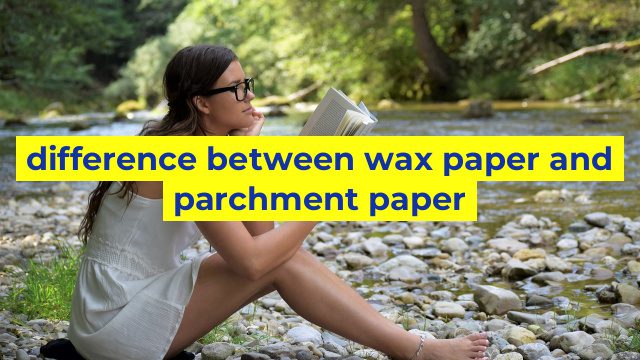The Difference Between Wax Paper and Parchment Paper
When it comes to baking, using the right type of paper can make a big difference in the final result of your baked goods. While wax paper and parchment paper may seem similar, they have distinct differences that can affect the outcome of your baking. In this article, we’ll go over the main differences between wax paper and parchment paper, so you can make an informed decision about which one to use next time you’re in the kitchen.
Wax Paper
Wax paper is usually coated with a thin layer of wax on one or both sides, which gives it a shiny appearance. This coating makes it water-resistant and grease-resistant, which is why it’s often used as a barrier to prevent food from sticking to surfaces.
However, wax paper is not heat-resistant and cannot be used in the oven. The wax coating can melt or even catch fire when exposed to high temperatures, so it’s important to only use wax paper for wrapping or lining cold foods, such as sandwiches or cheeses, or storing baked goods that are already cold or at room temperature.
Parchment Paper
Parchment paper, on the other hand, is heat-resistant and can be used safely in the oven. It’s usually made from unbleached paper with a silicone coating that prevents it from sticking to food, provides a non-stick surface, and allows for easy cleanup.
Parchment paper is versatile, and it’s often used as a liner for baking sheets, to make parchment “paper” cones for piping, or as a wrapper for foods that need to be baked, such as fish or cooked vegetables. It’s also perfect for baking cookies, as the silicone coating eliminates the need for greasing the cookie sheet, and the paper helps regulate heat transfer and prevents cookies from over-browning or sticking to the pan.
Conclusion
While wax paper and parchment paper may seem similar, they have very different properties that affect their performance. While wax paper is useful for wrapping, storing, and transporting food, it’s not suitable for baking, as the wax coating can melt or catch fire in the oven. Parchment paper, on the other hand, provides a non-stick surface that’s perfect for baking, and it can also be used for other kitchen tasks, such as piping or cooking en papillote. By understanding the differences between these two papers, you can make better choices for your baking needs and ensure the best possible results for your culinary creations.
Table difference between wax paper and parchment paper
| Characteristic | Wax Paper | Parchment Paper |
|---|---|---|
| Composition | Paper coated with wax | Paper coated with silicon or aluminum oxide |
| Heat Resistance | Not heat-resistant, cannot be used in the oven | Heat-resistant up to 450°F, can be used in the oven |
| Non-Stick Properties | Not completely non-stick; food can still stick to the wax coating | Completely non-stick, food won’t stick to the surface |
| Grease Resistance | Resistant to grease and moisture, but can become soggy over time | Highly resistant to grease, oil, and moisture, remains dry and crisp |
| Use | Commonly used for wrapping foods, lining countertops, or as a pattern tracing paper | Commonly used for lining baking sheets, making parchment paper cones, or as a non-stick surface when cooking |

